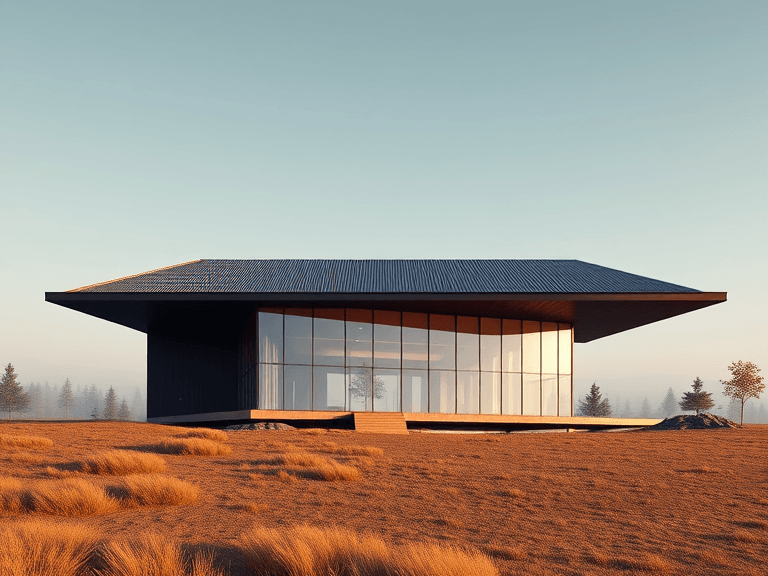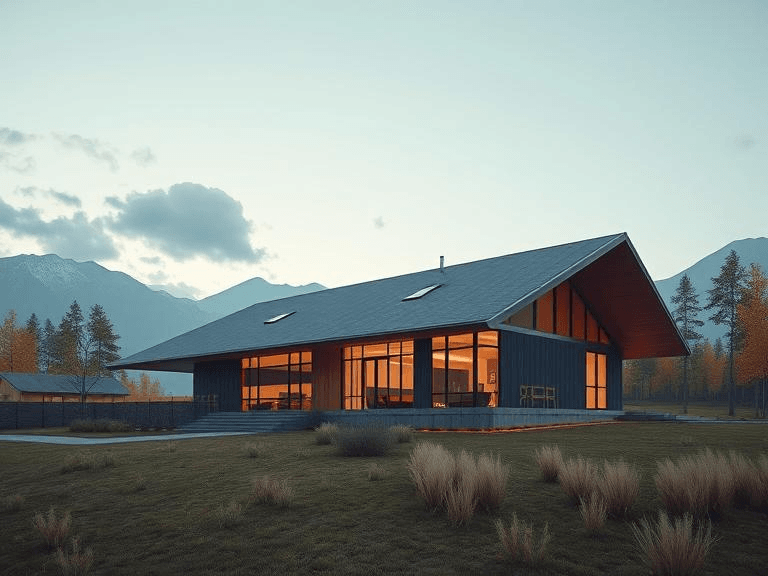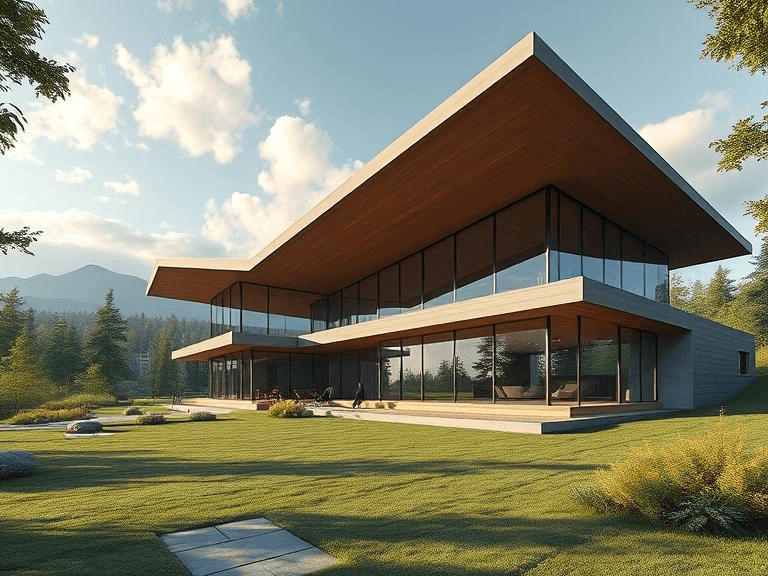
When embarking on a construction or renovation project, one of the most crucial decisions homeowners face is selecting the right roofing option. Roofing serves not only as a protective layer against the elements but also contributes significantly to the overall aesthetic appeal and energy efficiency of a home. With an array of materials and styles available, understanding the various roofing options and their respective benefits can empower homeowners to make informed choices.
Each roofing material comes with its unique set of characteristics, costs, and maintenance considerations. Popular roofing choices include asphalt shingles, metal roofing, clay tiles, and slate, among others. Asphalt shingles are widely regarded for their affordability and ease of installation, making them a common choice for budget-conscious homeowners. On the other hand, metal roofing is known for its durability and energy efficiency, though initial costs can be higher. Clay tiles offer a distinctive look and longevity, while slate roofing provides a premium option that can elevate the overall value of a property.
Beyond material selection, the costs associated with installation and ongoing maintenance are critical factors to consider. Installation costs can vary based on regional labor prices and the complexity of the roofing structure itself. Additionally, some roofing materials may require more frequent repairs or replacements than others, impacting their long-term affordability. For instance, while a low-cost material like asphalt may suffice in the short term, its longevity may prompt more frequent replacements compared to a higher upfront investment in metal roofing.
As potential homeowners or renovators evaluate their options, it is essential to weigh not only the initial cost but also the long-term performance and value of the roofing solution. In the ever-evolving market of roofing options, being informed about available choices can lead to enhanced satisfaction with the ultimate decision.
Understanding the Cost Factors
The cost of roofing can vary significantly based on several key factors that homeowners should consider when planning a roofing project. One primary variable is the quality of materials. Roofing materials range from economical options such as asphalt shingles to more premium choices like slate or metal roofing. While premium materials may incur a higher initial investment, they often provide enhanced durability and longevity, which can ultimately reduce long-term costs associated with repairs or replacements.
Another critical factor affecting roofing costs is labor. The expertise and experience of the roofing contractor can influence the overall budget. Depending on the complexity of the roofing installation or the specific requirements of the roofing type chosen, labor costs can take up a significant portion of the total expense. Homeowners should seek estimates from multiple contractors to gain a clearer picture of what labor costs might entail.
Geographical location also plays a crucial role in determining roofing costs. Different regions may have varying labor rates, affected by local market demand and economic conditions. Additionally, climate can impose specific requirements for roofing materials and installation approaches, which can further influence the overall cost. For instance, in areas prone to high winds or heavy snow, investing in more resilient roofing may be necessary, leading to higher upfront expenses.
Finally, the type of roofing system selected has its own associated costs. Options such as flat roofs, pitched roofs, and complex designs each come with unique considerations and costs. Understanding these factors and their interconnections will empower homeowners to make informed, strategic decisions regarding their roofing options, ensuring that they align both with their budget and their long-term needs.
Overview of Popular Affordable Roofing Materials
When considering cost-effective roofing options, several materials have gained popularity due to their balance of affordability, durability, and aesthetic appeal. Among the most common choices are asphalt shingles, metal roofing, wood shingles, and tile. Each of these materials presents unique characteristics that can cater to different preferences and requirements, thus making an informed decision essential for homeowners.
Asphalt shingles remain one of the most widely used roofing materials. They are known for their low initial cost, generally ranging from $90 to $100 per square. Furthermore, asphalt shingles provide reasonable durability, with an average lifespan of 20 to 30 years. Their versatility in design allows for a variety of styles and colors, making them an aesthetically pleasing choice for many homeowners.
Metal roofing, though slightly more expensive with costs typically around $100 to $300 per square, is favored for its remarkable longevity and energy efficiency. Metal roofs can last 40 to 70 years, making them a cost-effective option in the long run. In addition, they are available in various styles, including standing seam and corrugated sheets, providing an industrial yet contemporary aesthetic.
Wood shingles, while offering natural beauty and charm, require careful consideration due to their maintenance needs and susceptibility to pests. The average price for wood shingles ranges between $250 and $400 per square. However, they can function effectively for around 30 years when properly maintained, lending an elegant feel to any home.
Tile roofing, often associated with Mediterranean or Spanish architecture, typically costs between $300 and $800 per square. Tile roofs boast impressive durability, with a lifespan exceeding 50 years. Their visually striking appearance adds considerable curb appeal, yet they require a reinforced structure due to their weight.

Asphalt Shingles: The Budget-Friendly Champion
Asphalt shingles have long been celebrated as a budget-friendly roofing option for homeowners seeking an economical solution. Their initial cost is notably low compared to other roofing materials, making them an attractive choice for those working within a tight budget. On average, the installation of asphalt shingles can range from $90 to $100 per square, offering a financially viable alternative for roofing replacements.
One of the primary advantages of asphalt shingles is their ease of installation. Qualified roofing contractors can complete the job quickly due to the straightforward nature of these shingles, which can significantly reduce labor costs. This rapid installation process, combined with their affordability, has led to their widespread adoption across various residential properties. Furthermore, the availability of asphalt shingles in numerous styles and colors allows homeowners the flexibility to select a look that complements their architectural preferences.
However, despite their many merits, asphalt shingles are not without their drawbacks. The lifespan of these shingles typically ranges from 15 to 30 years, making them relatively short-lived compared to other roofing materials such as metal or slate, which can last for several decades. Additionally, asphalt shingles can be susceptible to various weather conditions, such as hail, strong winds, and extreme temperatures, which may lead to curling or cracking over time. This vulnerability necessitates more frequent repairs or replacements, which can offset their initial cost advantages.
In conclusion, while asphalt shingles offer significant affordability and convenience, potential buyers should weigh these benefits against their longevity and weather-resistant capabilities to determine if they are the right choice for their roofing needs.
Metal Roofing: A Cost-Effective Investment
Metal roofing has become increasingly popular in recent years due to its remarkable blend of durability, energy efficiency, and long-term cost savings. While the initial investment for metal roofing can be higher when compared to traditional materials such as asphalt shingles, its value is reinforced through lower maintenance and replacement costs over time.
One of the primary benefits of metal roofing is its impressive lifespan, often exceeding 50 years with minimal upkeep. This durability not only reduces the frequency of replacement but also lessens the environmental impact associated with discarded roofing materials. Homeowners should consider various options, such as aluminum, steel, and copper roofing, each providing its unique aesthetic appeal and performance characteristics.
Aluminum roofing is particularly favorable in coastal areas due to its resistance to corrosion. Steel, on the other hand, is recognized for its strength and affordability. While it may require a protective coating to prevent rust, it remains a popular choice among homeowners seeking longevity without excessive costs. Copper roofs, although on the pricier side, offer a distinctive look and exceptional durability, making them a favored investment in higher-end properties.
In addition to durability, metal roofing contributes to energy efficiency. Many metal roofs are designed with reflective coatings that help to minimize heat absorption. This characteristic can lead to reduced air conditioning costs during the hot summer months, proving advantageous for homeowners looking to lower their energy expenditures. Furthermore, some metal roofing systems are eligible for tax credits and rebates, enhancing the overall financial appeal.
Ultimately, while the upfront cost of metal roofing may seem daunting at first, its long-term benefits, coupled with minimal maintenance requirements and enhanced energy efficiency, position it as a wise investment. The selection of the right type of metal roofing can provide homeowners with peace of mind and significant savings over the life of their roof.
Wood Shingles and Shakes: A Natural Choice
Wood shingles and shakes have gained traction as a popular roofing material due to their aesthetic appeal and natural characteristics. These products, crafted from cedar, redwood, and other durable wood species, provide a warm and rustic look, enhancing the visual appeal of various architectural styles. While traditional roofing materials such as asphalt shingles dominate the market, wood roofing options offer a unique alternative that is both aesthetically pleasing and affordable.
In terms of cost, wood shingles and shakes typically range from $300 to $700 per 100 square feet, depending on the type of wood and quality chosen. This pricing positions them competitively among other roofing materials, despite their higher maintenance demands. Homeowners should account for additional costs associated with installation, as proper techniques are crucial for maximizing the lifespan of wood roofs. Proper installation can significantly enhance the longevity of this roofing type, often extending their lifespan to 30 years or more with appropriate care.
One significant advantage of wood shingles and shakes is their resilience against harsh weather conditions, including wind and hail, although they may require periodic maintenance to prevent rotting, warping, or insect infestation. Regular inspections combined with treatments, such as staining and sealing, can mitigate these risks and prolong the roof’s service life. On the other hand, wood roofs present certain challenges; they tend to have less fire resistance compared to alternatives like metal or asphalt, which may incur additional fire-proofing expenses.
From an environmental perspective, wood roofing options stand out due to their renewable nature. When sourced from sustainably managed forests, they contribute to eco-friendly building practices. Thus, homeowners seeking an attractive, durable, and environmentally conscientious roofing solution may find wood shingles and shakes to be an excellent fit for their needs.
Tile Roofing: A Balance of Aesthetics and Affordability
When considering roofing options, tile roofing often comes to mind as an expensive selection; however, this perception warrants further examination. Tile roofing, comprising materials such as clay and concrete, can actually provide significant aesthetic appeal at a more accessible cost than many homeowners assume. Additionally, various suppliers now offer synthetic tile systems, which mimic the appearance of traditional tiles while being more cost-effective and functional.
One of the primary reasons homeowners shy away from tile roofing is the upfront investment involved. However, the notable longevity of tile materials can lead to significant savings over time. Unlike conventional roofing options that may require frequent repairs or replacements, tile roofs are built to withstand harsh weather conditions, thereby reducing the likelihood of costly interventions. Moreover, the durability of tile roofs often entitles homeowners to extended warranties, fostering peace of mind with long-term assurances.
Another advantage of tile roofing is its energy efficiency. The structure of tile materials allows for better insulation, contributing to a decrease in heating and cooling costs. This can be particularly advantageous in regions with extreme climates, where energy expenses can escalate rapidly. The natural thermal resistance of tile roofing means reduced reliance on HVAC systems, which further translates to lower energy bills and a smaller environmental footprint.
When deliberating on roofing options, homeowners should consider not only initial costs but also long-term savings associated with tile roofs. The investment may be higher initially, but the balance of aesthetics, durability, and energy efficiency positions tile roofing as a viable and affordable option over time. Engaging with knowledgeable roofing professionals can further illuminate the various tile options available to meet budgetary constraints without sacrificing quality.
DIY vs. Professional Installation: Cost Considerations
When exploring roofing options, homeowners often grapple with the decision between DIY projects and hiring professional contractors. Cost considerations play a crucial role in this decision-making process, as both approaches come with distinct financial implications. On one hand, undertaking a DIY roofing project may seem attractive due to the potential for significant cost savings. By eliminating labor costs, which can account for a substantial portion of roofing expenses, a homeowner might find themselves at an advantage. However, the decision to opt for a DIY approach requires careful reflection on the skills and tools necessary to complete the project effectively.
Many homeowners possess the desire to save money and the willingness to learn. Yet, roofing installation is a complex task that necessitates a range of skills, including familiarity with safety protocols, material selection, and installation techniques. Inadequate knowledge or expertise can result in costly mistakes, potentially leading to damage that could necessitate professional intervention down the line. Additionally, DIY roofers must invest in durable tools, which can represent a substantial upfront cost. Therefore, while the allure of undertaking a DIY project is understandable, the financial implications extend beyond initial savings.
On the other hand, hiring professional roofing contractors brings a different set of advantages. Professional services typically guarantee quality workmanship, which can enhance the longevity of the roofing system. Contractors possess specialized skills and experience, enabling them to navigate unforeseen challenges effectively. In terms of cost, while labor expenses may seem daunting, the peace of mind offered by a professional installation often outweighs the initial price. Furthermore, many professionals provide warranties that cover workmanship and materials, securing the investment in the long run.
Ultimately, the choice between DIY roofing and professional installation is influenced by a range of factors, including budget, skills, and desired outcome. Each approach presents unique cost considerations that homeowners must evaluate carefully.
Conclusion: Choosing the Right Roofing Option for Your Budget
When it comes to selecting a roofing option that aligns with your budget, it is crucial to evaluate various factors that influence both cost and quality. Throughout this guide, we have examined a range of affordable roofing materials, highlighting their unique characteristics and benefits. From asphalt shingles, which are widely regarded for their cost-effectiveness and versatility, to metal roofing, known for its durability and energy efficiency, each option presents distinct advantages that cater to different homeowner needs.
It is essential to consider not just the initial installation costs, but also the long-term maintenance requirements and lifespan of the selected roofing material. For instance, while asphalt shingles may seem cheaper upfront, their lifespan tends to be shorter compared to metal roofs, which can lead to higher long-term expenses if replacement is required sooner than anticipated. On the other hand, although investing in a more expensive option like slate or tile roofing may require a significant upfront investment, their longevity can ultimately provide better value over time.
Additionally, it is important to assess your individual circumstances, including local climate conditions, architectural style, and property value. Engaging with a professional roofer can provide valuable insights into the most suitable options for your specific situation. By considering all these factors and performing thorough research, you will be better equipped to make an informed decision that fits within your financial parameters while addressing your roofing needs effectively.
Ultimately, the objective is to achieve a balance between affordability and quality, ensuring that the chosen roofing option enhances the overall aesthetics and functionality of your home. Making a well-considered selection not only protects your investment but also contributes to the long-term comfort and safety of your living space.


